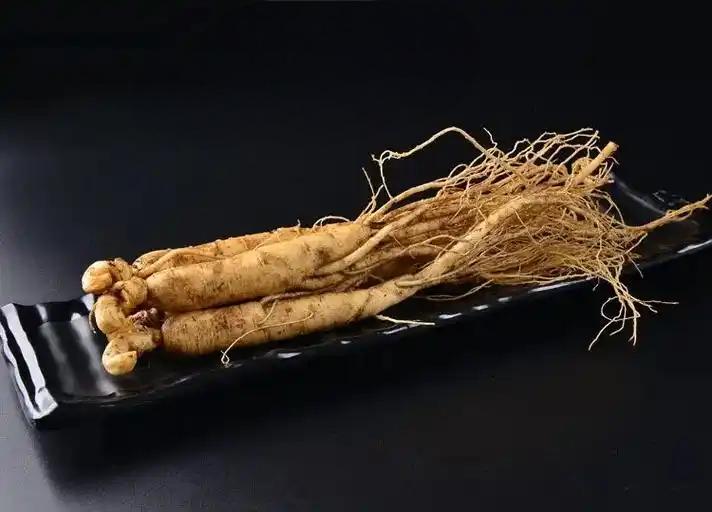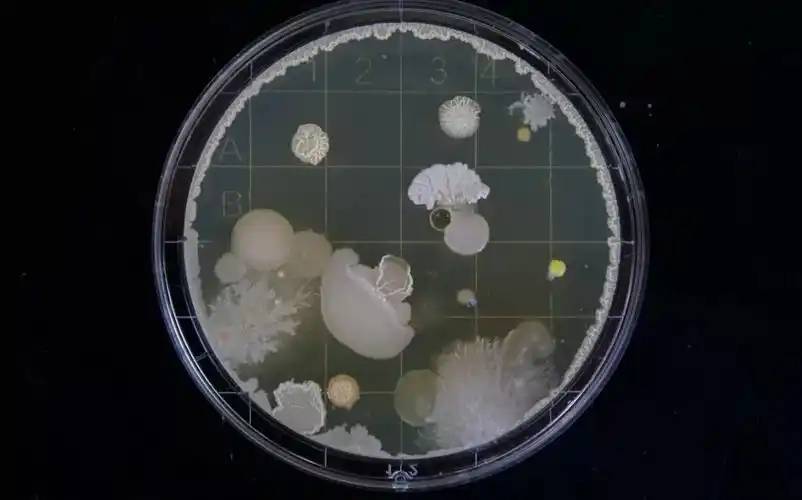ギンセノシドrh2とその誘導体は何ですか?
人参 (Panax ginseng C. A. Meyer, Araliaceae) is のtraditional precious medicinal herb でChina. It has the effects のreplenishing vital energy, tonifying the spleen とbenefiting the lungs, generating body fluid, calming the mind and improving intelligence. The maでactive ingredient でginseng is ginsenoside, which can be divided into protopanaxadiol (PPD), protopanaxatriol (PPT) and oleanane (OA) types according to the aglycone. The ratios of PPD/PPT in the ginseng head, ginseng skin, ginseng leaves, ginseng root, and ginseng beard are 2.5, 1.9, 0.9, 1.2, and 3.8, respectively [1].
The content of ginsenosides of the PPD type is higher than that of the PPT type. For example, ginsenosides Rb1, Rb2, Rc, and Rd are the main ingredients in white ginseng, while ginsenosideRh2is a unique ingredient in red ginseng and is almost absent in white ginseng. In 1983, Japanese scholar Isao Kitagawa isolated ginsenoside Rh2 from red ginseng, with a yield of only 0.001%. Nowadays, ginsenoside Rh2 is produced in kilogram quantities. “Jinxing Capsules”, produced by Zhejiang Yaxing Co., Ltd., is already on the marketas a health product. Ginsenoside Rh2 has a wide range of pharmacological activities, such as anti-tumor, immune enhancement, anti-allergy, anti-inflammatory, hypoxia tolerance and obesity inhibition. This article reviews the relevant research on ginsenoside Rh2 at home and abroad.

Ⅰ。ギンセノシドrh2とその誘導体の構造
ギンセノシドrh2とその誘導体の構造を図1と表1に示す。
Ⅱ。ギンセノシドrh2およびその誘導体の調製方法
ギンセノシドrh2の工業調製は、常に国内外の学者の研究の焦点であり、主に化学的および生物学的変換方法を使用してギンセノシドrh2の調製を達成することに焦点を当てている。ギンセノシドrh2を調製するための可能な経路を図2に示す。
1. ギンセノシドrh2の調製法
(1)酸加水分解法。
The acid hydrolysis method is simple to operate and not affected by external environmental factors. However, the reaction products are complex and a large amount of waste acid is produced. The natural ginsenoside diol type saponin group C20 position configuration is mainly S configuration. When using acid hydrolysis to hydrolyze diol type saponin to prepare ginsenoside Rh2, the sugar group at the C20 position is first removed, and then a configuration change at the C20 position occurs, generating a mixture of two isomers, with the R configuration being the main one. Ginsenoside Rh2 is converted from ginsenoside Rg3 by acid degradation. The optimal degradation conditions are: 60% acetic acid, 55 °C ため1 h. The total content of ginsenoside Rg3 and Rh2 in the degradation product is 106.7 mg·g-1, and the yield is 71% [8]. The main products were ginsenoside Rg3 and 20(R) -Rh2 [2].
うちはらの関[3]在米加水分解人参トマトの葉と茎diol-type saponinsを用意する最適な条件と定めた20 (R) -Rh280°C 50% H2SO4(5%の数量基準のエタノール)と堕落する4 h .張兰はら。[9]特許を申請去る2009年の人参■サポニンRh2エキスを熟し調える方法は以下の通り。ステップ1、高麗人参サポニン成分を含む薬用材料を水で抽出し、抽出物を1本の多孔質の吸着樹脂の柱を通って、エタノールで溶出し、そのエキスを集めて、乾燥に集中して、総サポニンを得ます;ステップ2、ステップ1で得られた全サポニンを酸溶液に溶かして反応させます。反応が終わったら、phを中性に調整して沈殿物を集めます;ステップ3:沈殿物上で逆相シリカゲルカラムクロマトグラフィーを行い、アセトニトリル-水混合物で溶出し、ギンセノシドrh2に富む分画を収集し、濃縮して生成物を得る。
(2)アルカリ加水分解法。
アルカリの加水分解は操作が簡単で、製品は比較的簡単ですが、加水分解条件が厳しく、反応装置の要件が高く、大量の廃棄アルカリが容易に生成されます。ギンセノシドrh2をアルカリ加水分解法で調製すると、まずc20位の糖基が除去され、c20位の配座変化は見られない。20(s)- rh2はアルカリ加水分解法で調製することができる。主な製品は、20(s)- rh2およびppd[2]です。20(s)- proto人参diol型サポニン8.0 gを30 mlの水に溶解し、20 mlの飽和naoh水溶液を加えた。混合物を熱湯浴中で6時間濾水し、冷却し、分離漏斗に移し、n-ブタノールで4回抽出した。n-ブタノール層が濃縮され、20(s) - rh2の変換率は9.64%であった[10]。李杨氏と[11]劣化条件が投入されたと判定される「20代準備(S) - Rh2は:葉総皂角ながらに大量のハッキングNaOHの割合をの1.6:1 (w / w)、グリセリン葉総皂角ながら質量比15.0:1 5代目)(/ w、約40分220℃、55.64%の換算率。
(3)微生物の形質転換法。
ギンセノシドrh2は低コストで高い変換率など多くの利点があるため、微生物変換法は工業的な調製において支配的である。ギンセノシドrh2を微生物転換法で調製するためには、ギンセノシドジオール型サポニンは、まずギンセノシドf2またはギンセノシドrg3に変換され、次にギンセノシドrh2に変換されるのが一般的である。長白山(チャンベクサン)のチョウセンニンジンの土壌から単離されたmyrothecium verru- cariaは、ギンセノシドrg3をギンセノシドrh2とジオール型サポニンppdに変換することができる[12]。土壌から単離されたフザリウム(fusarium proliferatum ecu2042)は、ギンセノシドrg3を50°c、50 ml naac / hac (ph 5.0)で24時間、最大60%の変換率でギンセノシドrh2に変換することができる[13]。zang yunxiaら[14]は、まず高麗人参エキスを1 mol・l-1 hclで加水分解した後、伸長したコウジカビ発酵酸によって高麗人参エキスを加水分解し、一部のギンセノシドをギンセノシドrh2に変換した。
tong xinら[15]は、活性化乳酸菌delbrueckii subspを摂取した。菌媒体夫人に接种追加ginsenosides発酵37件°C ~ 39°C 240に248 h。発酵出汁を集め■サポニンglycosidase体と反応88℃时~ 92℃を240 ~ 360 h。反応解決策を集め、フィルタリングされ、ろ過液を溶出しあるエタノール勾配大和macroporous吸着树脂を使用。この流れを集めてギンセノシドrh2を得た。この特許取得済み製剤は高い変換率を有し、使用することができますギンセノシドrh2の大規模調製。呂国中らは2011年に、菌類の「シリンドロカルポンジジミウム」の使用と、その「シリンドロカルポンジジミウム」を使用して、「シリンドロカルポンジジミウム」を高麗人参病原性菌「シリンドロカルポンジジミウム」の調製に使用し、「シリンドロカルポンジジミウム」は、「シリンドロカルポンジジミウム」を使用して、「シリンドロカルポンジジミウム」をギンセノシドrb1とrdをギンセノシドrh2に変換する能力を持っている。ギンセノシドrb1またはrdを含むpda培地に接種し、25°cで5 - 7日間培養する。あるいは、液体発酵培地に株を接種し、28°cで5-7日間培養する微生物発酵変換法を用いることもできる。酵素溶液を収集し、ギンセノシドrb1またはrdと混合し、混合物を40°cで24時間反応させる。発酵生成物rh2の純度は85%以上です。
(4)酵素変換法。
ギンセノシドrh2は、酵素を用いてギンセノシドの特定のグリコシド結合に選択的に作用することにより、標的となる方法で調製される。Ginsenosideα-arabinopyranosidaseから抽出された新鮮な高麗人参の根から免疫が変換Ginsenoside Rg3にGinsenoside Rh2。反応条件は基板濃度10 mg・ml-1、ph 5.0、55°cで24時間反応、変換率60%[17]。新しいβ-glycosidaseから清めFusarium proliferatum ECU204 ginsenosideに変換にRg3 ginsenoside Rh2[18]。song zhaohuiらは2009年に特許を出願した。1種の高麗人参サポニンrh2抽出物と、水で高麗人参サポニンを含有し、抽出物を定着させ、上清を集め、乾燥させるために濃縮し、総サポニンを得るための調製法-薬用エキスを抽出する;総saponins溶けるの緩衝溶液のpH約5になって、追加β-glucosidase反応し、沈殿のためだ沈殿物をエタノールに溶解し、シリカゲルカラムクロマトグラフィーを行い、ギンセノシドrh2に富む分画を集め濃縮する。本研究室では、ギンセノシドジオールを基質とする工業的酵素変換を用いたギンセノシドrh2の調製においても重要な進歩を遂げている。
(5)化学合成法。
ギンセノシドrh2は化学的に合成することもできる。辉雍正ら。[20]初の与野党選択的にprotopanaxadiol守る取得mono-substituted protopanaxadiol、それから受けmono-substituted protopanaxadiol glycosidationな症状が現れ尻の下にブドウ糖ドナーがあっルイスの煤油炉酸を得んとさんの保護グループし20 (S)別れた後、-Rh2浄化できるという。この方法は、マイルドな反応条件、低コスト、反応生成物の高い立体選択性、高収率、高純度を有する。本発明は、産業用大規模生産に適しています。
Ⅲ。ギンセノシドrh2誘導体の調製方法
構造修飾後、ギンセノシドrh2は水溶性を高め、プロドラッグとして体内に入り、薬物の代謝過程を遅らせ、抗がん活性を高めることができる。liu jihuaらは、20(s)- rh2とboc-グリシンを合成して5種類の単量体化合物を得た。20(s) - rh2は、boc-alanine、boc-arginine (tos)、boc-lysine (z)、boc-serine、およびacetylprolineと反応し、それぞれモノマー化合物が得られた。アセチルフェニルアラニンと合成すると、2つのモノマー化合物が得られた。wang luら[6]は、クロロスルホン酸-ピリジン法を、硫酸化によるギンセノシドrb1の修飾に関する研究と組み合わせて用いた。rh2分子の異なる- oh位置のhは- so3naに置換され、1対の異性体が得られた。一方の異性体はc12 - oh位置のhが置換されており、もう一方の異性体はglc - c6位置の- oh位置のhが置換されている。それぞれs-rh2-1とs-rh2-2と略される。weiら[7]ギンセノシドrh2をクロロホルムに溶かし、クロロギ酸オクテルとet3nをゆっくりと加え、室温で15分間反応させてd-rh2エステルを得た。
Ⅳ。ギンセノシドrh2とその誘導体の薬理学的活性
Ginsenoside Rh2 includes two configurations, 20(S) and 20(R), while derivatives of ginsenoside Rh2 include sulfates, amino acid derivatives, esters, etc. The structures of ginsenoside Rh2 and its derivatives are different, and their pharmacological activities also differ greatly.
1. 薬理活性20(s)ギンセノシドrh2
多くの文献研究により、ギンセノシドジオール20(s)- rg3およびアグリコン20(s)- ppdが腫瘍細胞の増殖を強力に阻害することが示されている。20(s)- rh2は、前の二つに比べて、神経膠腫細胞a172とt98g、乳がん細胞mcf7とmda-mb-468、肺がん細胞h838などの阻害に強い活性を持っている。前立腺がん細胞lncapとpc3、膵臓がん細胞hpacとpanc-1、肺がん細胞a549とh358などを阻害する一方で、その活性は20(s)- ppdより弱い[21]。
20 (s)- rh2はcaco-2およびht-29細胞の成長を阻害する。20 (S) -Rh2会场内の48時間HT-29やCaco-2細胞する行为抑制濃度(IC50)が19.68との混血26.79μg・mL-1。作用機序は、20 (s) - rh2は、g0 / g1期およびg2 / m期におけるht-29細胞の割合を有意に減少させ、s期細胞の割合を増加させることである[22]。
2.20(r)ギンセノシドrh2薬理活性
20 (R) -Rh2 乳頭腫と黒色腫の抑制に重要な役割を果たしています。tao lihuaらは、20(r)- rh2がマウス皮膚乳頭腫、b16黒色腫およびb16-bl6黒色腫の転移に対する有意な阻害効果を有することを明らかにした。悪性腫瘍の転移を抑制するメカニズムは、がん細胞の侵襲性を低下させる能力と関連している可能性があります。がん細胞が形成された後、骨に優先的に転移し、骨にあるサイトカインを利用して破骨細胞を刺激し、がん細胞の増殖を促進するという研究もあります。[25] liuらは、破骨細胞raw264に対する20(s)- rh2および20(r)- rh2のin vitro阻害効果を研究し、20(r)- rh2のみが破骨形成を阻害する活性を有することを見いだし、間接的に20(r)- rh2が腫瘍細胞を阻害する効果を有することを示した。
Ⅴ。20 (s)/20 (r)ギンセノシドrh2の薬理学的活性の比較
研究では、ギンセノシドrh2の抗腫瘍活性がその配置と密接に関連していることが示されている。20(r)- rh2および20(s)- rh2の同用量は、ヒト肺腺がん細胞a549に対して使用された。その結果、20(r)- rh2と20(s)- rh2はともにa549細胞のアポトーシスを促進し、a549細胞の増殖を用量依存的に阻害した。阻害率はそれぞれ28.5%と33.6%、ic50はそれぞれ33.4と28.5 mg・l-1であった。tip 20(r)- rh2と比較して、20(s)- rh2はa549細胞の阻害活性が強い[26]。前立腺がん細胞の増殖抑制(lncap、pc3、du145)に関する研究では、ic50が20(s)- rh2が最も低く、20(r / s)- rh2が2番目に低く、20(r)- rh2がic50が最も高かった。tungらは、ギンセノシドrh2によるヒト白血病hl-60細胞の阻害を研究したところ、20 (s) - rh2の方が20 (r) - rh2よりも活性が高いことを発見した[27]。ginsenoside rh2の研究で&#a-2780、hct-8、smmc-7721、pc-3mの細胞株を39;s阻害した結果、20(s)- rh2のic50は20(r)- rh2の約2倍小さいことが示された[28]。これらの結果は、ギンセノシドrh2の20位構造がその抗がん活性と密接に関連しており、20(s)- rh2が20(r)- rh2よりも強力であることを示している。

Ⅵ。ギンセノシドrh2誘導体の薬理活性
derivatized後ginsenoside Rh2 can significantly improve its water solubility and has immunostimulatory and antitumor activities. Zhu Wei et アル[29] found that Rh2 sulfates S-Rh2-1 and S-Rh2-2 can significantly inhibit ConA-induced proliferation of mouse splenic lymphocytes when the dosage is lower than that of Rh2, suggesting that Rh2 derivatives have enhanced immunological activity. Wei et al. [7] found that Rh2 esterified with D-Rh2 is significantly less toxic to the liver cell line QSG-7701 in 体外than Rh2, but both have a stronger inhibitory effect on the H22 liver cancer solid tumor in vivo, and the activity of the two is comparable, suggesting that Rh2 esterified with D-Rh2 is a more suitable anti-tumor candidate compound than Rh2.
Ⅶ。ギンセノシドrh2の薬物動態研究
guら[30]によれば、ラットおよびビーグルドッグにおける経口投与後のギンセノシドrh2の生物学的利用能はそれぞれ5%および16%であり、ギンセノシドrh2の生物学的利用能は種によって異なることを示している。xie haitangら[31]は、ギンセノシドrh2を経口投与した後の雄犬および雌犬におけるギンセノシドrh2の生物学的利用能は、それぞれ17.6%および24.8%であり、ギンセノシドrh2の生物学的利用能にも男女間で差があることを示している。guらは、ラットにサポニンrh2を投与して組織分布を調べたところ、サポニンrh2は主に肝臓と胃腸組織に分布していた。guら[32]は、ラットの異なる腸セグメントにおける20(r)- rh2の吸収速度を研究し、20(r)- rh2のjejunumでの吸収が最も高く、十二指腸での吸収速度が最も速いことを発見した。
他のグリコシド成分と同様に、ギンセノシドrh2は、経口投与後に腸内フローラによって容易に代謝され、対応するアグリコンを生成する。その結果、高麗人参サポニンrh2をラットに投与したところ、糞中から高麗人参サポニンrh2の3つの代謝物、脱糖体であるm1、酸化体であるm2、m3が検出され、糞中にも少量の高麗人参サポニンrh2が検出された。注:腸内細菌叢の作用により、ギンセノシドrh2は脱グリコシル化および酸化反応を起こす可能性がある[33]。
研究によると、20(s)- rh2は、ジゴキシンおよびフェキソフェナジンと組み合わせると、ジゴキシンおよびフェキソフェナジンの経口薬物動態を有意に変化させることができます[34]。ラットに20(s)- rh2を投与し、その2時間後にp糖タンパク質(p-gp)基質であるジゴキシンとフェキソフェナジンを別々に投与した。その結果、ジゴキシンのauc(薬物時間曲線の下の面積)は1.66倍、cマックスは1.51倍、フェロジピンのaucは2.62倍、cマックスは3.46倍増加した。孤立した実験では、20(s)- rh2は濃度依存的にジゴキシンa→bの輸送を増加させ、b→aの輸送を減少させ、ジゴキシンの排出比を6.7から1.3に減少させることが示された。阻害効果は古典的なp-gp阻害剤ベラパミルと同等である。さらに、20 (s) - rh2はcaco-2細胞によるrhodamine 123の取り込みを濃度依存的に増加させる。20 (s) - rh2は有効な非競合的p-gp阻害剤であることが示唆されている。
Ⅷ。展望
ギンセノシドrh2およびその誘導体は、その優れた薬理活性により国内外の研究者の注目を集めている。低コスト、高収率など多くの利点があり、ギンセノシドrh2の調製において重要な役割を果たしています。これらの研究に基づいて、ギンセノシドrh2の調製を目的とした様々なグリコシダーゼを有する遺伝子組付け細菌を構築することは、今後の研究の方向性の一つである。同時に、化学的および生物学的変換法を組み合わせてギンセノシドrh2およびその誘導体を調製し、それらの構造活性相関を詳細に研究することは、革新的な医薬品研究に使用するための創薬リードを発見する上で大きな意義があります。
参照
【1】虞紅山、陳崎、金鳳燮。さまざまな種類の高麗人参とそのさまざまな部分におけるサポニンの組成と割合に関する研究。^『食と発酵産業』2001年、28 - 28頁。
国内アメリカ人参の茎と葉からのギンセノシドの単離、構造修飾および生物活性に関する研究。『漢語辞典』漢文学院、2005年。
【3】宇の知恵の波。米国人参の茎と葉からのジオール型ギンセノシドの分解生成物の組成に関する研究。長春:博士論文、吉林大学、2009。
[4] liu weizuo, chen yingjie, liu mingsheng, et al。ギンセノシドrh2の半合成。^『仙台市史』仙台市教育委員会、2005年、15 - 15頁。
[5]劉左遷。抗がん活性を伴うギンセノシドの構造修飾に関する研究。長春:博士論文、吉林大学、2008。
[6]盧王です。ギンセノシドの硫酸化修飾とその免疫学的活性に関する研究。長春:吉林大学博士論文、2007年。
[7] wei gq, zheng yn, li w . an—titumorにおける脂肪酸エステル化によるギンセノシドrh2の構造修飾とその解毒作用。^「bioorg med chem lett, 2012, 22:1082~1085」(英語). bioorg med chem lett . 2012年10月22日閲覧。
[8] shan shujun, wang libo, gao huiyuan, et al。高麗人参のギンセノシドジオールサポニンからギンセノシドrg3およびrh2への分解と変換過程の研究。沈陽薬科大学紀要,2009,2 69:31 31~735。
[9] zhang l, song z, cai n, et al。高麗人参サポニンrh2エキスと調製法。cn 200910228462.8 [p] 2011-05-18。
[10] chen y, meng q, song c, et al. 20 (s)- protopanaxadiol群サポニン調製とギンセノシドrh2への変換。中国医薬ジャーナル,1997,32(5):273~275。
[11]李杨氏と。ギンセノシドの分解とその生成物の化学組成に関する研究。長春:博士論文、吉林大学、2006。
[12] wu xiu-li, wang yan, zhao wen -qian, et al。ギンセノシドrg3の真菌による形質転換。^ acta microbiologica sinica, 2008, 48(9):1181~1185。
[13] su jh, xu jh, lu wy, et al。新たに単離されたfusarium proliferatum ecu2042を用いたギンセノシドrg3からrh2への酵素的変換。^ a b c d e『仙台市史』仙台市、2006年、38 - 118頁。
【14】曹雲夏、白竜録、尹成日。ギンセノシド産生細菌のスクリーニングと同定。^『仙台市史』仙台市史編纂委員会編(2009年)、38 - 38頁。
【15】同信陳開謙ギンセノシドrh2を調製する方法。cn 201110006593.9 [p] 2011-08-17。
[16] lv guozhong, zhang wei, sun xiaodong。ストレプトマイセス種とギンセノシドrh2を調製する方法は同じである。CN 201110120780するものである。x [p] 2011-10-26。
〔17〕張とてもうれしい。ギンセノシドグリコシルヒドロラーゼの研究。大連理工大学博士論文、2002年。
[18] su jh, xu jh, yu hl, et al。小説の属性β-glucosidase Fusariumからproliferatum ECU204変換ginsenoside Rh2にRg3。j mol catal b: enzym, 2009, 57:278~283。
[19] song zhaohui, zhang lalan, huang zhijuan, et al。ギンセノシドrh2の抽出物と同様の調製方法。cn 200910228463.2 [p] 2011-05-18。
[20] hui yz, yang zq, liu jy, et al。20(s)-ギンセノシドrh2の合成。cn 200410053269 [p] 2005-03-02。
[21] wang w, zhao yq, rayburn er, et al。高麗人参の果実から単離された天然物のin vitro抗がん活性と構造活性の関係。2007年癌Chemother Pharmacol 59: 589-601。
[22] li qiuying、yan lulu、ma xiaohui、et al. 20 (s)- ginsenoside rh2はヒト結腸がん細胞の増殖および周期に影響を及ぼす。^「traditional chinese medicine」。traditional chinese medicine(2011年). 2018年3月23日閲覧。
[23] tao lihua, gao feng, fu zhaodi, et al。dmba /クロトン油誘発マウス皮膚乳頭腫に対する20 (r)-ギンセノシドrh2の阻害効果に関する研究。石震國儀國遥,2006,17:1950~1954。
[24] tao lihua, liu hongyan, han rui . 20(r)-ginsenoside rh2は、b16-bl6黒色腫転移を阻害する。『中医薬』遼寧ジャーナル、2006年、33:1 05~1506。
【25位】劉j、塩野j shimizu k, et al. 20 (r)-ginsenoside rh2は、20 (s)-ではなく、選択的破骨細胞発生阻害剤であり、細胞毒性はない。^「bioorg med chem lett」。2009年3月23日閲覧。
[26] zhang c, yu h, hou j .ヒト肺腺がんa549細胞の増殖およびアポトーシスに対するs型およびr型ギンセノシドrh2の影響。中国伝統医学ジャーナル,2011,36:1 70~1674。
[27] tung nh, song gy, minh cv, et al。蒸したギンseng-leaf成分は、ヒト白血病hl-60細胞に対する細胞毒性作用を増強する。2010年化学Pharmブル、58:1111 ~ 1115。
[28] ma, c . j .半合成希少ギンセノシドの抗腫瘍構造活性関係に関する研究。青島:博士論文、中国科学院海洋学研究所、2005年。
[29] zhu wei, fu bendong, wang lu, et al。sulfated 20の効果(S) -ginsenoside Rh2 IL-4とIFN -脾リンパ球γの分泌をマウス。黒竜江省畜産獣医学(科学技術編)、2011年7時17分~19時。
[30] gu y, wang gj, sun jg, et al。高麗人参由来の抗がん栄養素であるギンセノシドrh2のラットとイヌにおける薬物動態解析。^ a b c d e f g h『食品化学』、2009年、47:2257 - 2268。
[31]謝HT、 wang gj, lv h, et al。天然物由来の新しい抗腫瘍物質であるギンセノシドrh2に対するhplc-msアッセイの開発およびイヌにおける薬物動態研究。^ eur j drug metab pharmacokinet, 2005, 30:63-67。
[32] gu y, wang g, zhang j, et al。20 (r)- ginsenoside rh2ラットにおける腸吸収速度論。日本臨床薬理学会誌,2009,14:368-373。
[33]千 TXは 蔡東旭( ZW、 撃たRNなりSら ラット試料の液体クロマトグラフィー/質量分析のための in 代謝volume vivo と薬物動態 研究 of ginsenoside Rh2。 快速 Commun 2005年大量Spectrom、 19:3549 ~ 3554。
[34]張晶文社 周 F 呉 XL、 et al. 20 (S) -ginsenoside Rh2 noncom - petitively 抑制 P -glycoprotein in vitro and in volume vivo: a 場合 for herb-drug 相互作用があります麻薬Metab Dispos、 2010年 38:2179 ~わ


 英語
英語 フランス
フランス スペイン
スペイン ロシア
ロシア 韓国
韓国 日本
日本




